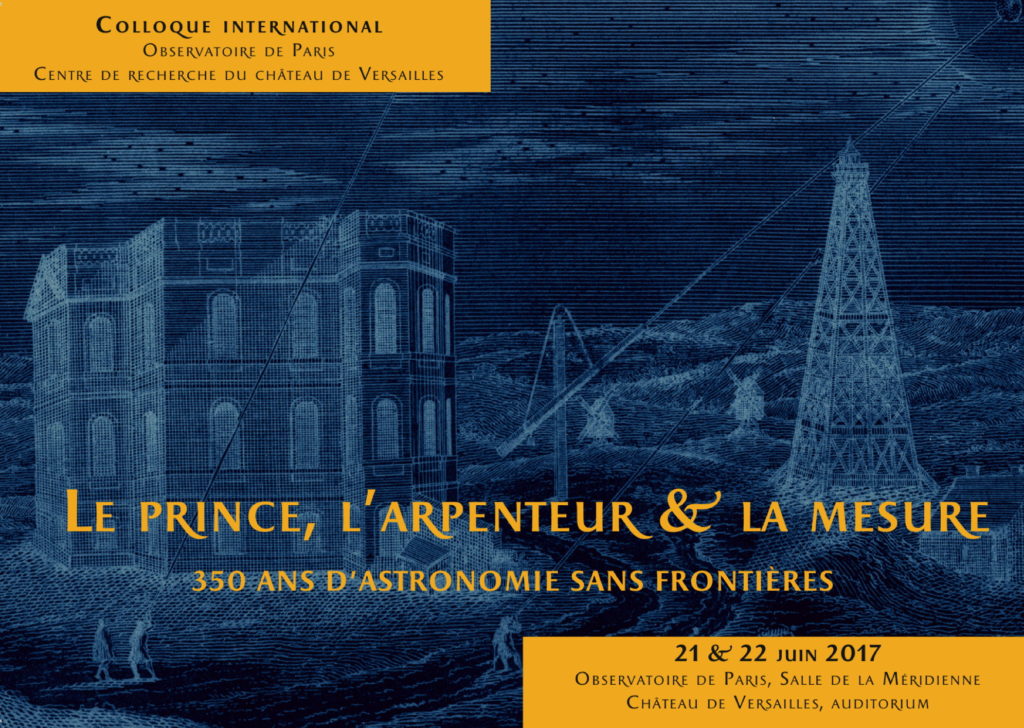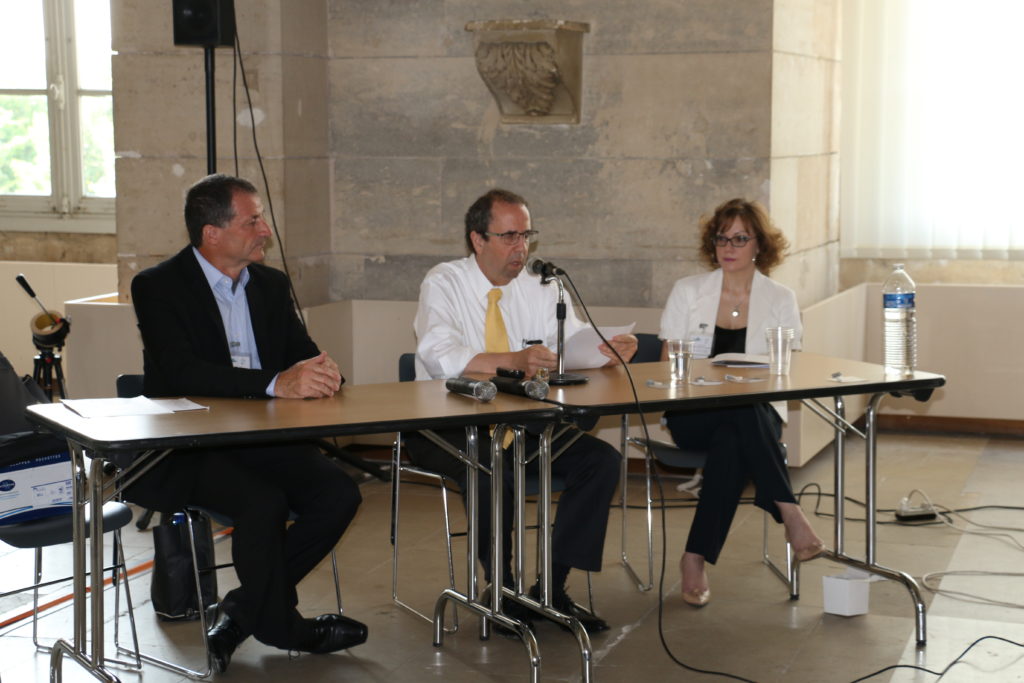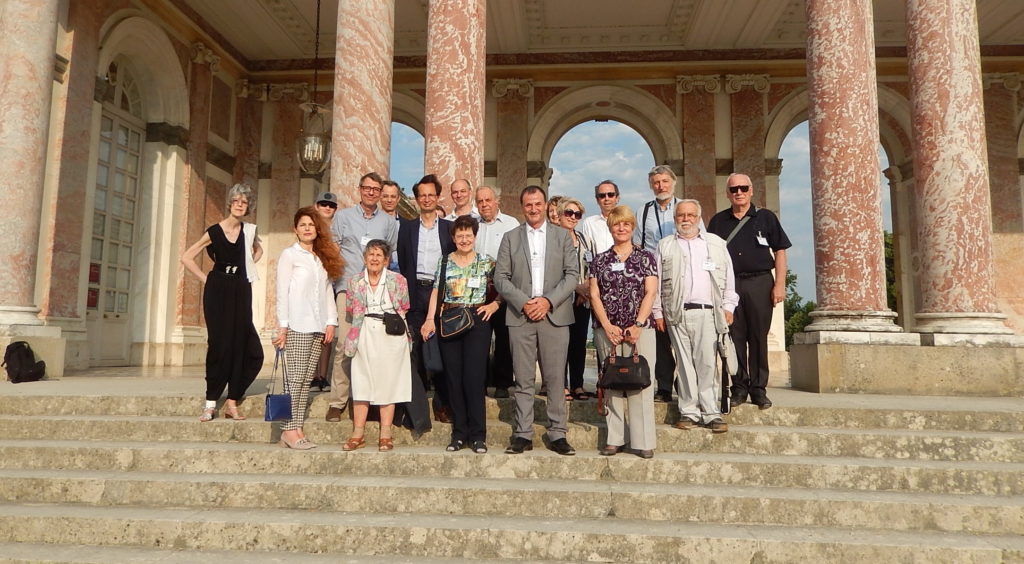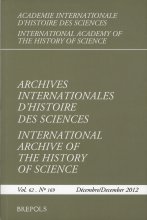
Le Prince, l’Arpenteur & la Mesure : 350 ans d’astronomie sans frontières – 21-22 June 2017 : an International conference on the 350th Anniversary of Paris Observatory’s Meridian Line drawn on solstice day, June 21, 1667.
Science International Committee:
Thomas Widemann, Observatoire de Paris – LESIA (President)
Eberhard Knobloch, Berlin -Brandenburgische Akademie derWissenschaften
Mordechai Feingold, Division of the Humanities and Social Sciences, Caltech
Françoise Combes, Observatoire de Paris – LERMA, Académie des Sciences
Mathieu da Vinha, Centre de recherche du château de Versailles.
An international colloquium was convened on 21-22 June 2017 in the Observatoire de Paris and in the Centre de Recherche du château de Versailles, to commemorate the 350th anniversary of the founding of the Observatoire—as well as of the drawing of its Meridian Line on solstice day, 21 June 1667. The event furnished an opportunity to visit the political and courtly context of the foundation, and the dissemination of a Parisian model of academies and observatories throughout Europe in the following two centuries.
At the crossword of the history of European courts, the history of science, and the history of architecture, Claude Perrault’s design of the Observatory building intended to stage royal power while attracting many scholars and famous visitors. In addition to drawing the Meridian line for determining the longitudes, the Observatory was intended to serve as a storehouse of scientific artifacts and a monument to Louis XIV’s glory— commissioned by Colbert along with a Triumphal Arch for the conquest of the earth [never built], [an] Observatory for the heavens. The Observatory as an institution contributed greatly to the advancement of mathematical astronomy in the eighteenth and nineteenth centuries.

In addition to drawing the Meridian line for determining the longitudes, the Observatory was intended to serve as a storehouse of scientific artifacts and a monument to Louis XIV’s glory— celebrated by Colbert as the “Triumphal Arch for the conquest of the earth. Observatory for the heavens.” Claude Perrault’s design of the building intended to stage royal power while attracting many scholars and famous visitors.
As a contemporary counterpoint, the colloquium highlighted several linternational projects involving the Observatory’s community today, including the design of future telescopes, revolution in metrology with atomic clocks, space missions exploring the solar system, and exploration of dark matter and the large-scale structure of the universe. Contributions and discussions will appear in a special volume of International Archives of History of Sciences in 2020.

Proceedings of the conference, edited by Thomas Widemann, are soon to appear in a Volume of International Archives of the History of Science.
Les Archives Internationales d’Histoire des Sciences sont l’organe de l’Académie internationale d’Histoire des Sciences qui compte 385 membres répartis dans le monde entier. Cette revue existe sous ce titre depuis 1947, mais elle est la continuation d’Archeion. Archivo di storia della scienza, fondé en 1919 à Rome par l’illustre Aldo Mieli.
Cette revue représente le plus haut niveau en histoire des sciences et des techniques. Elle est la seule revue généraliste puisqu’elle traite toutes les périodes, toutes les aires culturelles et tous les domaines de l’histoire des sciences et des techniques. Elle publie deux fois par an, en juin et en décembre, des articles sélectionnés au terme d’un quadruple refereeing aveugle par le comité de rédaction.
Le Prince, l’Arpenteur & la Mesure : 350 ans d’astronomie sans frontières – 21-22 June 2017
- 21-21 June 2017 conference presentation abstracts booklet
- Les Carnets de Versailles : 350 ans de Lumières – par Thomas Widemann – 8 Juin 2017
- Video capture of the full day of presentations on June 22, 2017
- Web report by J.-P. Martin







